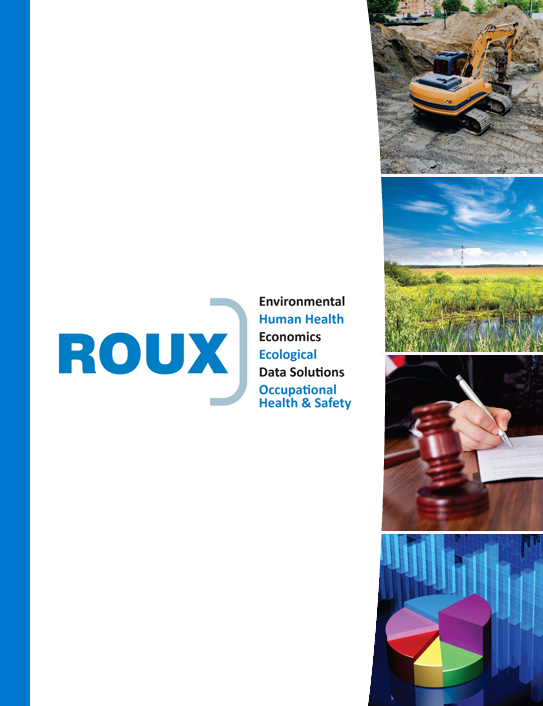Notable Changes & Implications: CA Vapor Intrusion Supplemental Guidance
In February 2020, a new draft vapor intrusion (VI) guidance document (Draft VI Supplemental Guidance, available as a PDF here) was released for public comment by several of the agencies that comprise California Environmental Protection Agency (CalEPA). The proposed changes outlined in this guidance will have a significant impact on properties where soil or groundwater is or is suspected to be impacted by volatile organic compounds (VOCs). In the following sections we summarize the significant changes from current guidance and how these changes may impact developers, property owners, and responsible parties.
The good news is that the Draft VI Supplemental Guidance seeks to standardize state-wide sampling protocols and screening practices for evaluating potential VI risks and eliminating the inconsistencies between agencies and jurisdictions. However, the Draft VI Supplemental Guidance in its current form is also proposing as or more conservative practices than we have seen in California. The increased scope of sampling and analysis could increase the cost of VI evaluations by at least 30% to 60%, by both substantially increasing the area targeted for sampling and lengthening the period of time necessary to complete a full screening for VI. This is especially true for sites where chlorinated VOCs are the primary chemicals of concern. Note that this draft guidance does not apply to petroleum releases from underground storage tanks; however, it does apply to complex petroleum release sites. The VI screening recommendations include multiple rounds of sampling in different seasons, likely leading projects with short development time frames to opt to install vapor mitigation systems on what had previously been considered relatively low risk sites. Going forward, developers can expect increased complexity regarding the VI assessment process, and should request, if possible, comprehensive VI data during the due diligence period.
Significant changes include:
Multiple-Step Process for VI Assessments – Site assessments will be expected to follow a more prescribed process with an increased focus on multiple lines of evidence from multiple sampling media (i.e., investigations may be expected to commonly include not only soil gas data, but also soil and groundwater, as well as ambient and indoor air). See the flowchart on pages ix and x of the Draft VI Supplemental Guidance for an overview. This is significant because:
- An increase in costs and business disruptions for site assessments can be expected due to the following:
- Multiple sampling events of multiple media are suggested, including seasonal (temporal) sampling and indoor air HVAC-on and -off sampling events, with more onerous sampling protocols recommended, such as 36-hour HVAC-off shut down period (rather than 24-hour) prior to any indoor air sampling.
- Larger sampling events to assess VI because of factors such as:
- Two or more sampling depths are now recommended for all soil gas screening, which will increase drilling and analytical costs.
- Ambient and indoor air sampling are expected regulatory recommendations, particularly where continued use of existing buildings is planned.
- A preferential pathway investigation is now recommended, in recognition of the potential for VOCs to preferentially move through sewer pipes and similar conduits that may run through contaminated soil or groundwater. The scope of such investigations remains uncertain, especially in regard to whether such investigations may be expected to extend off-site.
- Based on the findings of any site assessment, the Draft VI Supplemental Guidance sets forth a Risk Management Decision Framework for ranking the expected VI risk at a site, including consideration for managing VI risks under present and future uses of the site. (See page 28 of the Draft VI Supplemental Guidance.) The increased complexity and length of time for the recommended screening is expected to lead to an increase in time and effort necessary to complete a risk assessment and navigate the regulatory process.
VI Attenuation Factors – As has been anticipated, the Draft VI Supplemental Guidance confirms that Cal-EPA is adopting the medium-specific attenuation factors (AFs) developed by the USEPA for VI risk assessment. These AFs, which are used to estimate how much of the vapor in groundwater or soil gas can be expected to be present in indoor air, are substantially more conservative than AFs that have been used by most California regulatory agencies in the past. In addition:
- Use of mathematical modeling of potential VI, most notably the Johnson & Ettinger (J&E) model, is not recommended, and is therefore generally expected to no longer be accepted.
- Cal-EPA is adding capabilities to the Geotracker database, requiring that the additional VI data collected under this Guidance be made publicly available.
Due to the COVID-19 public health emergency, the public comment period is extended to 12 noon on June 1, 2020 and the original public information meetings scheduled for April 2020 are postponed until further notice. The Water Boards and DTSC are committed to protecting the health of the public and staff, and the uncertainty surrounding transmission of the novel COVID-19 virus and the known effects on vulnerable populations in our community warrants exercising extreme caution. Click here to read more.
Details on the meetings and how to submit comments, as well as a copy of the draft guidance, are provided here.
While details regarding some of the most notable changes in the new VI guidance are summarized above, feel free to reach out to your Roux contact or fill out the form below with any questions you may have regarding this significant change to how potential VI impacts are assessed across the state of California. The team at Roux is ready to assist you with effectively moving your project through this rapidly evolving regulatory environment.
